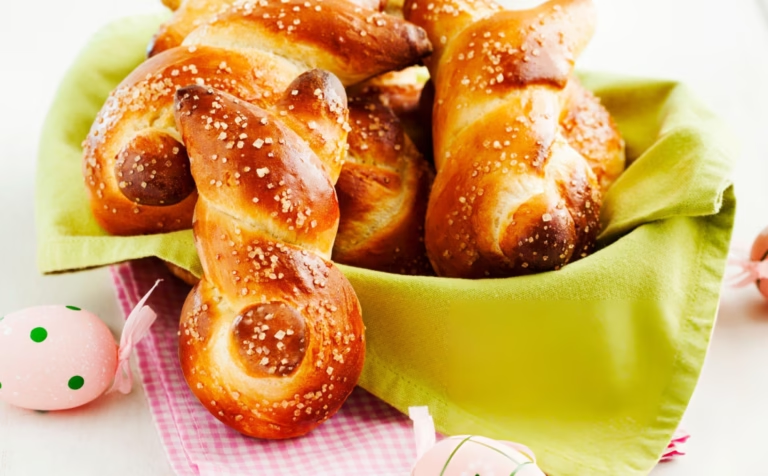Salmon isn’t just a fish—it’s a superstar ingredient. Packed with omega-3s, protein, and versatility, it’s a favorite for home cooks and chefs alike. Whether you’re a seafood newbie or a seasoned pro, this guide has something for everyone. We’ll explore foolproof recipes, global flavors, and tips to make your salmon dishes shine. Let’s dive in!
Why Salmon? Health Benefits & Versatility
Salmon is a nutritional powerhouse:
Heart-healthy fats: Omega-3s support brain and heart health.
Protein-packed: Keeps you full and fuels muscle growth.
Rich in vitamins: High in B12, D, and selenium.
Plus, it’s incredibly adaptable. Grill it, bake it, or toss it in a salad—it’s hard to mess up!
How to Choose the Best Salmon
Picking quality salmon ensures great flavor:
Wild vs. Farmed: Wild-caught has a firmer texture; farmed is fattier and often more affordable.
Freshness check: Look for bright flesh, no fishy odor, and firm texture.
Sustainability: Opt for brands with MSC or ASC certifications.
Master the Basics: 4 Essential Cooking Methods
1. Oven-Baked Salmon
Perfect for: Beginners and meal prep.
Recipe: Lemon-Garlic Baked Salmon
Ingredients:
4 salmon fillets
2 tbsp olive oil
3 garlic cloves (minced)
1 lemon (sliced)
Salt, pepper, and fresh dill
Steps:
Preheat oven to 375°F (190°C).
Place salmon on a baking sheet. Drizzle with oil, garlic, salt, and pepper.
Top with lemon slices and dill. Bake 12-15 minutes.
Tip: Add asparagus or cherry tomatoes to the tray for a one-pan meal!
2. Grilled Salmon
Perfect for: Summer BBQs.
Recipe: Honey-Soy Glazed Salmon
Ingredients:
4 salmon fillets
¼ cup soy sauce (or tamari for gluten-free)
2 tbsp honey
1 tbsp minced ginger
Steps:
Mix soy sauce, honey, and ginger. Marinate salmon 30 mins.
Grill on medium heat, skin-side down, 5-7 minutes per side.
Tip: Soak cedar planks for a smoky twist!
(Continue with Pan-Seared and Poached methods…)
Global Flavors: Salmon Around the World
1. Teriyaki Salmon (Japan)
Sweet, sticky, and ready in 20 minutes. Serve with steamed rice and broccoli.
2. Mediterranean Salmon Bowl
Top quinoa with salmon, olives, feta, and tzatziki.
3. Indian Salmon Curry
Simmer salmon in coconut milk with turmeric, cumin, and cilantro.
Healthy & Diet-Friendly Recipes
1. Keto Salmon Avocado Salad
Mix flaked salmon with avocado, mayo, and lime.
2. Low-Calorie Salmon Lettuce Wraps
Swap carbs for crisp lettuce cups filled with salmon, mango, and slaw.
3. Gluten-Free Pesto Salmon
Coat salmon in basil pesto and bake. Serve over zucchini noodles.
15-Minute Meals for Busy Nights
1. Salmon Stir-Fry
Sauté salmon with veggies and a sesame-soy sauce.
2. Salmon Tacos
Top corn tortillas with grilled salmon, cabbage, and chipotle mayo.
Fancy Enough for Guests
1. Cedar-Planked Salmon
Infuse smoky flavor using a cedar plank on the grill.
2. Salmon Wellington
Wrap salmon in puff pastry with spinach and cream cheese.
Storing & Reheating Tips
Fridge: Keep cooked salmon 2-3 days in an airtight container.
Freeze: Wrap tightly; lasts up to 3 months.
Reheat: Use oven or air fryer to retain moisture (avoid microwaving).
Frequently Asked Questions About Salmon Recipe
The tastiest way to cook salmon depends on personal preference, but pan-searing is a top choice for achieving a crispy exterior while keeping the inside tender and juicy. Heat a skillet with olive oil or butter over medium-high heat, season the salmon with salt and pepper, and cook skin-side down for 4-5 minutes until crispy. Flip and cook for another 2-3 minutes. Another delicious method is oven-baking with a glaze, such as honey garlic or teriyaki, which caramelizes beautifully. For smoky flavor, grilling salmon on a cedar plank is unbeatable. The key is not to overcook it—salmon is best when it’s still slightly pink in the center.
Salmon pairs well with a variety of sides, but some of the best options include roasted vegetables (asparagus, Brussels sprouts, or sweet potatoes), grains (quinoa, rice, or couscous), and fresh salads (avocado, citrus, or cucumber). For a heartier meal, serve it with creamy mashed potatoes or buttery pasta. If you want a light and refreshing combo, try lemon-dill rice or a mango-avocado salsa. The natural richness of salmon balances well with acidic, herby, or slightly sweet accompaniments.
Salmon is versatile and works with many seasonings. A classic combo is salt, pepper, garlic powder, and lemon zest. For an herby flavor, dill, parsley, or thyme are excellent choices. If you prefer bold flavors, try smoked paprika, cumin, or Cajun seasoning. Asian-inspired options include soy sauce, ginger, and sesame seeds, while Mediterranean flavors like oregano, basil, and feta also work well. A simple brown sugar and chili rub adds a sweet-spicy kick. The key is to enhance, not overpower, salmon’s natural taste.
Both methods have advantages. Pan-frying is faster (10 minutes max) and gives a crispy skin, making it ideal for weeknight meals. Oven-baking is more hands-off, great for cooking multiple fillets evenly, and works well with glazes or marinades. If you want the best of both, start by searing the salmon in a pan for crispiness, then finish it in the oven for perfect doneness. Oven cooking is also better for delicate toppings (like breadcrumbs or herbs) that might burn in a pan.
Both work, but they serve different purposes. Oil (like olive or avocado oil) has a higher smoke point, making it better for high-heat methods like pan-searing. Butter adds rich flavor but burns faster, so it’s best for low-heat cooking or finishing (like basting). For the best results, use a mix: sear with oil, then add butter and herbs at the end for a restaurant-quality taste. Ghee (clarified butter) is another great option—it has a high smoke point but retains buttery richness.
A good salmon marinade balances acid, fat, and flavor. Popular options include:
Lemon-garlic-herb: Olive oil, lemon juice, garlic, and dill.
Teriyaki: Soy sauce, ginger, honey, and sesame oil.
Maple-mustard: Dijon mustard, maple syrup, and apple cider vinegar.
Greek yogurt-based: Yogurt, lemon, and spices for tenderizing.
Marinate for 15-30 minutes (not longer, or the acid can "cook" the fish). For stronger flavor, brush extra marinade on while cooking.
Toppings add texture and flavor:
Citrus slices (lemon, orange) for brightness.
Herb crust (parsley, dill, breadcrumbs) for crunch.
Glazes (honey mustard, balsamic reduction) for sweetness.
Spice rubs (brown sugar, chili powder) for a caramelized crust.
Pesto or tapenade for Mediterranean flair.
Press toppings gently so they adhere while cooking.
Gordon Ramsay keeps it simple but flavorful:
Salt and pepper (always).
Lemon zest for freshness.
Olive oil to prevent sticking.
Sometimes fresh herbs (dill, thyme) or a honey-soy glaze.
His key tip? Don’t overcrowd the pan to ensure crispy skin.
A few tricks maximize salmon’s taste:
Salt early (draws out moisture and enhances flavor).
Acids (lemon, vinegar) balance richness.
Umami boosters (soy sauce, mushrooms) deepen savoriness.
Fat (butter, olive oil) carries flavors and adds richness.
High-heat cooking (searing, grilling) creates caramelization.
Pairing with sweet (honey), spicy (chili), or herbal (dill) elements also elevates it.


